
Grower Bill Martens (3rd from left) welcomes the group of participants from the CGC bus tour. Martens is growing English and Mini Cucumbers inside this greenhouse which he recently acquired. The greenhouse was initially used for ornamental production, but when Martens bought the property, he took the benches out and retrofitted it into a cucumber greenhouse by bringing gutters and trellising systems inside. The Venlo glass greenhouse itself was built by GGS Structures around 1999.
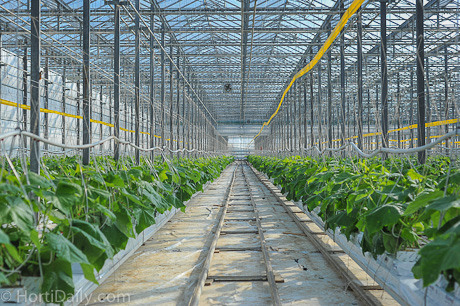
Hanging gutters with the third cucumber crop on it. The first crop was planted in January, the second in July and this third crop was planted on Saturday October 4. The first rooting from the Grodan blocks to the Grodan Grotop Expert slabs took place on Tuesday October 7, the day that I took this picture. The plant's were propagated by Ontario Plants.
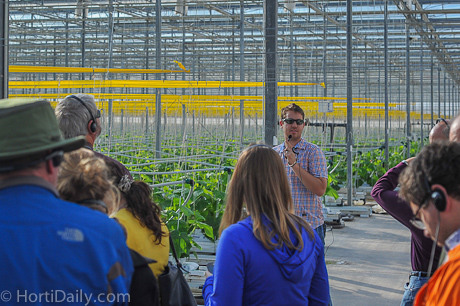
Grower Jan Chechalk of Bluewater Greenhouses shared his experience with high wire cucumber cultivation. "We tried it for two rounds in one of our sections. The quality of the crop was phenomenal, we really grew an outstanding crop. But the crop required too much labour to make it affordable. The market simply doesn't offer you better money for better quality cucumbers. This made us decide to quit high wire trials and continue with the current trellising system."
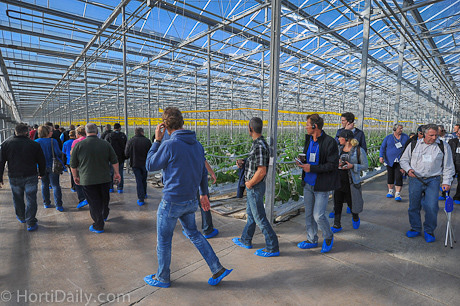
Inside the greenhouse, yellow sticky tape is part of the IPM program. They use it as a preventative measure against pests. Since the greenhouse is located in an area with no other greenhouse except a neighbouring plant of St. Davis Hydroponics, there is not too much pest pressure at this location.
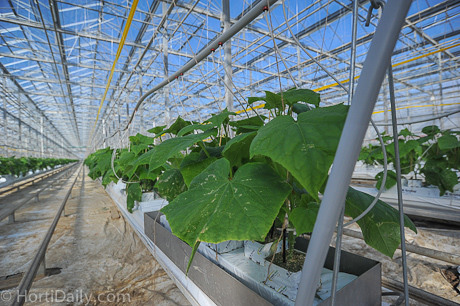
The most important threats in the cucumbers are spider mites and thrips, and whitefly is relatively new to Martens. They use biological control as Swirskii and Amblyseius californicus in sachets to fight the pests.
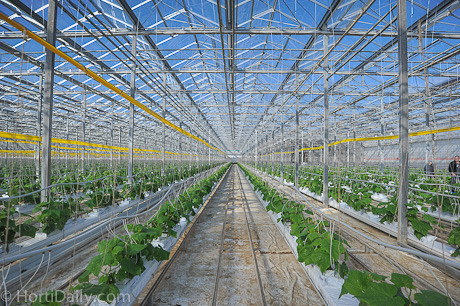
Martens applied Redufuse coating on the greenhouse in May. They are a bog fan of diffusing light; the next 7 acres they are going to build will be completely outfitted with Diffuse glass."We see better crops under diffuse glass, and we believe we can achieve a much better production output", Martens said. According to him, the diffuse glass wil give him almost 30% more production.
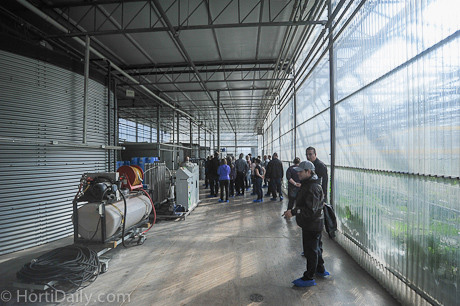
Martens uses soluble fertilizers. In the water technical room several water treatments as o-zone and UV. Several HortiMax units are used. According to Martens, the greenhouse has a closed irrigation system; nothing is polluting the environment.
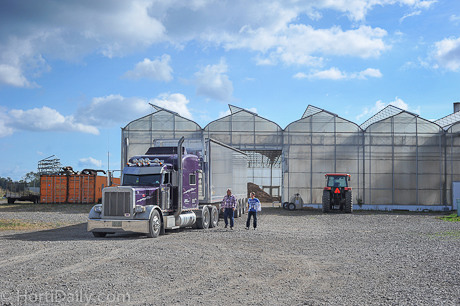
A truck is bringing new biomass for the burners to heat the greenhouse. Martens is burning wood waste material. Outside also a large tank of Air Liquide can be seen; this one holds pure clean CO2 to fertilize the crops with. The CO2 from the wood burner is no suitable for horticulture as it contains to much NOX; this is dangerous for the crops.
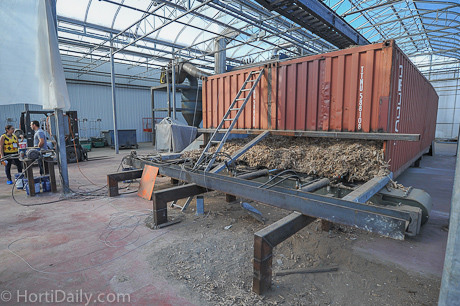
This is the feeder of the biomass burner; it has been built in-house and is made of two shipping containers that are welded together. A hydraulic walking floor brings the biomass to a conveyor belt which feeds the burner. Innovative!
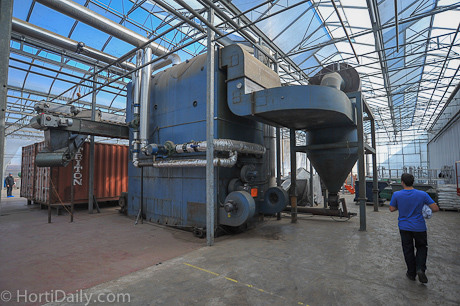
The burner. Besides this biomass boiler, Martens is still using a boiler (5-6 Gigajoules) for natural gas. Not only as a back up; during the harsh winters his greenhouses requires more heat than the biomass installation can produce.
We would like to thank Bill Martens and his crew for the warm welcome at their site!










